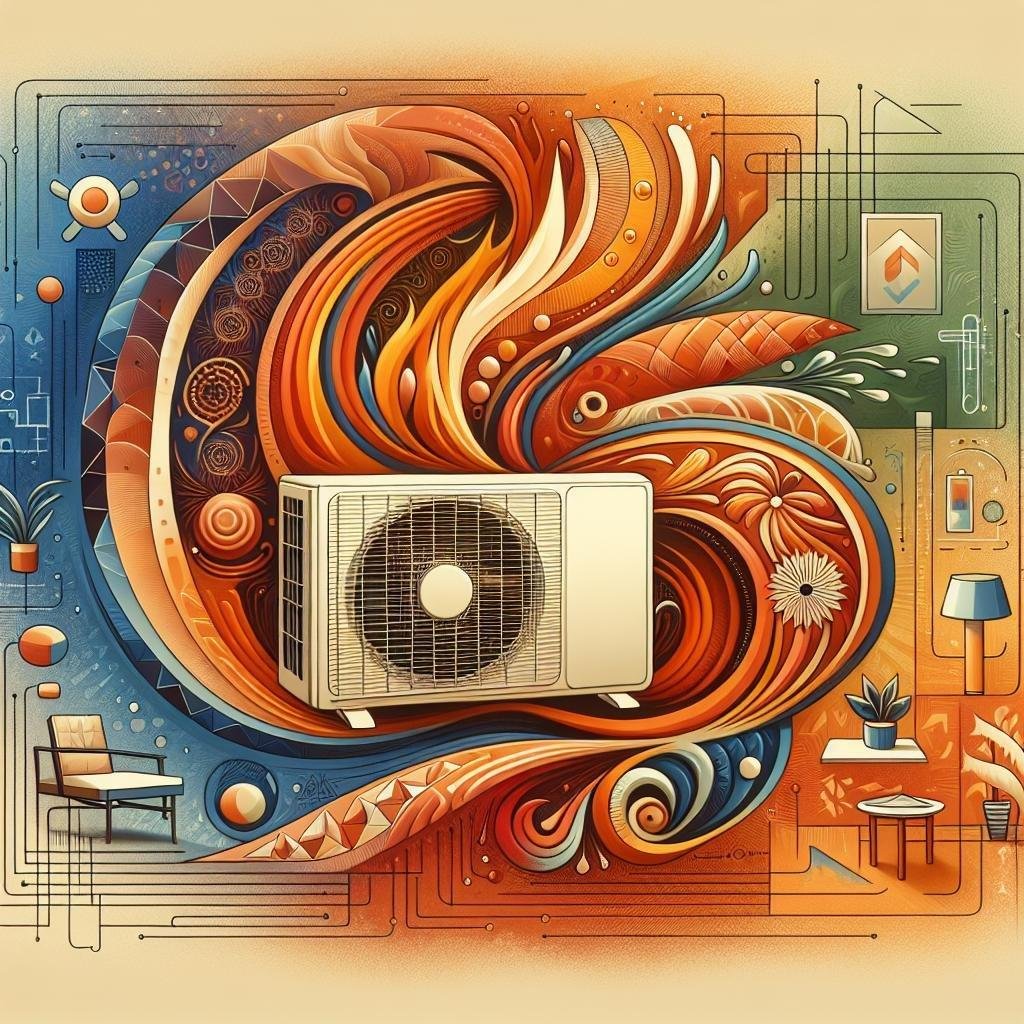Does a mini split AC produce dry heat while heating a room?

as winter’s chill creeps through our homes, many of us huddle around our trusty heating systems, desperately seeking that perfect balance of warmth and comfort.But there’s a burning question that keeps popping up in conversations about mini split heat pumps: does that cozy warmth they provide come with the dreaded side effect of desert-dry air? You know the feeling – that parched throat and static-charged hair that makes you feel like you’ve been wandering through the Sahara. Well, grab yoru favorite warm beverage, and let’s dive into the fascinating world of mini split heating systems and their relationship with indoor humidity.
Understanding Mini Split Heat: Comfort Meets Science in Your Living Room
Ever wondered about the science behind your cozy winter evenings? Mini split systems transform your living space through an ingenious process called heat pump technology. Unlike conventional furnaces that burn fuel to create warmth, these smart devices extract existing heat energy from outdoor air – yes, even in cold weather! They operate like your refrigerator in reverse, using refrigerant to capture heat and distribute it efficiently throughout your room, maintaining consistent comfort levels without the typical dry, stuffy feeling of conventional heating.
The magic lies in how mini splits handle humidity while heating. Traditional heating methods often strip moisture from the air, leaving you with that uncomfortable desert-like atmosphere. Though, mini splits preserve the natural humidity balance as they don’t rely on combustion or resistance heating. This means you get to enjoy:
- Naturally balanced moisture levels
- Fewer static electricity shocks
- Better skin comfort during winter
- Healthier indoor air quality
| heating Method | Humidity Impact | Comfort Level |
|---|---|---|
| Mini Split | Maintains Natural | High |
| Furnace | Reduces | Moderate |
Say Goodbye to bone-Dry Air: How mini Splits Keep Moisture Just Right While Heating
Unlike traditional heating systems that can turn your home into a desert-like surroundings, mini split heat pumps excel at maintaining optimal humidity levels while warming your space. These innovative systems work by extracting heat from outdoor air rather than creating dry heat through combustion or electrical resistance. This natural process helps preserve the existing moisture in your indoor air, making it easier to breathe and more pleasant for your skin, houseplants, and wooden furniture.
The moisture-preserving magic of mini splits comes from their unique operation and smart technology features that include:
- Variable-speed compressors that adjust heating intensity without overdrying
- Built-in humidity sensors that monitor and maintain ideal moisture levels
- Advanced fan modes that distribute air evenly without creating dry spots
- No ductwork that could leak or affect humidity balance
| Heating Method | Moisture Impact |
|---|---|
| Mini Split | Preserves natural humidity |
| Forced Air | Significantly reduces moisture |
| Electric Heat | Creates very dry conditions |
Cozy Warmth Without the Desert Effect: Your Complete Guide to Mini Split Humidity Levels
Maintaining the perfect balance of humidity while heating your home can feel like solving a complex puzzle. Mini split systems excel at providing warmth without turning your living space into a moisture-depleted zone.Unlike traditional forced-air heating systems that frequently enough strip the air of its natural moisture, mini splits work differently by transferring heat rather than creating it. This gentle approach helps preserve the room’s existing humidity levels, keeping your skin happy and your indoor plants thriving.
The secret lies in the heat pump technology that powers your mini split system. During heating mode, it doesn’t burn fuel or use heating elements that typically dry out the air. Instead, it efficiently moves heat from outside to inside, working alongside your room’s natural moisture balance.Here are the key benefits you’ll experience:
- Natural humidity preservation during heating cycles
- Reduced static electricity in your living space
- better comfort for sensitive sinuses and skin
- Improved indoor air quality for houseplants
| Heating Method | Humidity impact |
|---|---|
| Mini Split | Minimal Change |
| Forced Air | Notable Decrease |
Smart climate Control: Mastering Your Mini Split for Perfect Winter Comfort
Achieving the perfect balance of warmth and humidity during winter becomes effortless with a mini split system’s advanced climate management capabilities. Unlike traditional heating methods that can leave your space feeling parched, these innovative units employ a elegant heat exchange process that maintains natural moisture levels.The system extracts heat from outdoor air and transfers it indoors through refrigerant circulation, preserving the air’s inherent humidity while delivering consistent, comfortable warmth throughout your living space.
Fine-tuning your comfort preferences is a breeze with these smart systems, offering precise temperature control and automated features that adapt to your lifestyle. Consider these smart optimization strategies:
- Set fan speeds to ‘Auto’ for optimal moisture balance
- Maintain temperatures between 68-72°F for ideal comfort
- Use the ‘Dry’ mode sparingly during heating season
- Keep air filters clean for efficient moisture management
| Mode Setting | Humidity Impact | Comfort Level |
|---|---|---|
| Heat | Maintains Natural | Optimal |
| Auto | Balanced | High |
| Dry | Reduces | Variable |
Q&A
Q&A: Does a Mini Split AC Produce Dry Heat While Heating a Room?
Q1: What is a mini split AC and how does it work?
A1: Great question! A mini split AC is a versatile heating and cooling system that consists of an indoor unit and an outdoor condenser. It works by transferring heat either into or out of your home, depending on the mode you set it to. While cooling, it removes heat from your indoor air, and while heating, it extracts heat from the outside air—even when it’s chilly out there!
Q2: When using a mini split AC for heating, will it make the air feel dry?
A2: Ah, the classic conundrum! Yes, mini split systems do have the potential to produce drier air during the heating process. Many traditional heating systems,like central furnaces,can release moisture into the air,which makes the warmth feel cozy and inviting. Mini splits, on the other hand, operate by pulling moisture from the air along with the heat, leading to a drier sensation in the room. Think of it as a cozy, albeit slightly desiccated, hug!
Q3: Is dry heat uncomfortable? How can I tell if it’s too dry?
A3: Dry heat can be a little like a prickly sweater—comfortable for some, clumsy for others! You might notice signs of dryness in your skin, throat, or eyes, or maybe even static electricity zaps! If your indoor plants start drooping like they’ve had one too many of your “dry” jokes, that’s a good hint it’s time to add some moisture back into the air.
Q4: Is there a way to manage the dryness produced by a mini split during heating?
A4: Absolutely! You’re in luck! To combat that dry heat, consider using a humidifier. It’s like adding a splash of fun to an or else parched party! You can also place bowls of water near your mini split unit or try air-purifying plants that naturally release moisture. Just like adding a few extra marshmallows to your hot cocoa, it’ll help create a warm and dreamy environment.
Q5: Should I be concerned about energy bills when using my mini split for heating?
A5: It’s always good to keep an eye on those energy bills! Mini split systems are generally energy-efficient, especially when fitted with inverter technology. They can provide effective heating without cranking up costs dramatically. Though, always balance the thermostat settings to avoid a runaway heating scenario—your wallet will thank you later!
Q6: Can I set my mini split to provide moist heat rather?
A6: While a mini split doesn’t come with a “moist heat” setting—unless you’ve got a secret model we don’t know about!—you can run it alongside a humidifier or try running it on a lower setting. This can create a balanced atmosphere that feels warm without leaving your skin feeling like a paper towel.
Q7: Any final tips for using mini splits in the winter?
A7: Of course! Remember to give your mini split some love with regular maintenance—clean those filters! Also, dress warmly and enjoy a cozy cup of tea while you set the heating just right. And hey, if you ever start feeling too dry, you know how to bring the moisture back. Cheers to comfort, no matter the season!
Final Thoughts
As we wrap up our exploration of mini split AC systems and their heating capabilities, it’s clear that these versatile units offer more than just comfortable coolness in summer—they can also keep you toasty warm in the winter months. While they do produce a slightly drier heat compared to traditional heating methods, this can be a blessing in disguise, especially for those who appreciate a crisp, fresh atmosphere.
So whether you’re cozying up by the fire with a good book or hosting friends for a winter gathering, rest assured that your mini split AC has got your back (and front)! If you find the air a tad too dry, simple solutions like humidifiers or indoor plants can help restore that perfect balance. Always remember, comfort is a personal journey, and your mini split is just one of the many tools to make your space feel like home.
thank you for joining us on this chilly yet enlightening adventure! If you have any questions or experiences to share about your own mini split heating, we’d love to hear from you.Stay warm and cozy until next time!






















